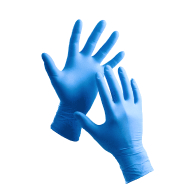Dapro Globe-Tech Polo, Oil Black/Hi-Vis Yellow
Product description
This professional-grade protective polo combines flame-retardant properties with anti-static and arc flash protection in a comfortable 220 GSM fabric blend. Featuring flame-retardant buttons and strategic high-visibility accents at the shoulders, this garment meets multiple safety standards including EN ISO 11612:2015 and IEC 61482-2:2018. The versatile unisex design includes practical features like a chest pocket and elastic cuffs, making it suitable for various industrial applications requiring protective workwear.
Product Features:
- Collar with flame-retardant plastic buttons
- High-visibility accent panels at shoulders
- Left chest pocket
- Elastic cuffs
- Unisex design
Technical Details:
- Fabric composition: 98% Guardian, 2% Anti-static
- Weight: 220 GSM
- ATPV: 6.3 cal/cm²
- APC1 rated
Care Instructions:
- Machine wash at or below 40˚C
- Permanent Press
- Do not bleach
- Do not tumble dry
- Iron at low temperature
- Dry clean with any solvent except trichloroethylene
Standards:
- EN ISO 11612:2015 A1 B1 C1
- EN 1149-5:201
- IEC 61482-2:2018
- EN 13758-2:2003+A1:2006
Defines the shirt's design format such as polo, t-shirt, or button-up, affecting both professional appearance and functional comfort in workplace settings.
Defines the neck area design, affecting professional appearance, comfort during long shifts, and compatibility with safety equipment or ties.
Measured in grams per square meter (g/m²), indicating fabric thickness and durability. Higher values offer more protection; lower values enhance breathability and comfort.
Designed for versatile fit and comfort for all genders. Offers a practical, less tailored style suitable for various work environments.
Tailored for a comfortable and flattering fit on the female form. Designed with enhanced mobility and a professional appearance in mind.
Designed for a comfortable and functional fit, this work shirt is tailored to the male physique, offering enhanced movement and durability.
Defines how the shirt is secured or fitted at the waist area, affecting comfort, mobility, and how well the garment stays in place during physical work.
Defines how sleeve ends are finished and secured. The style affects wrist protection, comfort, adjustability, and how easily sleeves can be rolled up during work.
Defines the length of the shirt's arm coverage, affecting comfort in various temperatures, protection levels, and compliance with workplace safety requirements.
Describes how the shirt conforms to your body shape, affecting comfort, range of motion, and professional appearance during physical work activities.
- High Visibility
- Electrical Protection
- UV Protective
- Machine Washable
Request a free sample
Test first and buy later. Visit any product page to request your free sample.
Standards and labels
EN 1149-5:2008 is a European standard that specifies the requirements for electrostatic dissipative (ESD) gloves. The standard defines performance requirements for material, design, and testing of ESD gloves. The gloves must be able to effectively discharge static electricity and protect the wearer from ESD. Testing includes measuring the surface resistance of the glove material. Pass/fail results are based on the gloves meeting or not meeting the specified requirements.
Test results
Material Performance TestedThe EN 1149-5:2008 standard specifies the performance requirements for material used in protective clothing designed to avoid incendiary discharges. The test result Tested means that the material has undergone relevant evaluation procedures to confirm its static dissipative properties. These tests generally involve measuring the electrical resistance of the material in ohms (Ω) to determine its capability to dissipate electrostatic charges and prevent sparking that could ignite flammable substances. The practical implications of this result for the respective product category (like protective workwear for use in explosive atmospheres) are significant, as it ensures that the clothing provides a level of protection against electrostatic discharges, potentially reducing the risk of fire or explosion in environments with flammable gases, vapors, or dusts.
EN 11612:2015 is a European standard that specifies the requirements for protective clothing against heat and flame. This standard defines performance requirements for material, design, and testing of clothing that protects the wearer from heat and flames. Testing includes measuring the clothing's resistance to heat and flame, as well as its ability to self-extinguish. Pass/fail results are based on the clothing meeting or not meeting the specified requirements.
EN 13758-2:2003+A1:2006 is an amendment to the European standard EN 13758-2:2003. This amendment sets additional requirements for testing the performance of air filters used in ventilation systems. The standard defines test methods for measuring the filter's ability to remove gaseous pollutants such as odors and volatile organic compounds (VOCs) from the air. It also specifies test methods for measuring the filter's airflow resistance and filter leakage. The amendment also includes additional test methods for measuring the filter's ability to remove microorganisms and radioactive particles. Test results should show the filter's efficiency in removing gaseous pollutants, microorganisms and radioactive particles, as well as its airflow resistance and filter leakage. The standard also specifies labeling and documentation requirements for air filters that meet its performance requirements.
Test results
UVA & UVB Radiation UPF #,##The EN 13758-2:2003+A1:2006 standard outlines the criteria for assessing the Ultraviolet Protection Factor (UPF) of textiles intended to provide protection against ultraviolet (UV) solar radiation. The result indicates the level of ultraviolet protection afforded by the fabric. Specifically, this number represents how much UV radiation (both UVA and UVB) the textile can block. A higher UPF number equates to better UV protection, where a rating of 50 means that the fabric will allow only 1/50th of the sun's UV rays to pass through.The test method used to determine this result involves exposing the textile to a simulated solar spectrum and measuring the amount of UV radiation that penetrates the fabric. This standard ensures that the fabric's weave, thickness, color, and stretch, among other factors, are considered during testing. The results from this testing are crucial for manufacturers of sun-protective clothing, as they provide a measurable and standardized level of UV protection to be communicated to consumers. Products meeting a high UPF rating are particularly significant for consumers who require superior protection from UV radiation due to health concerns or environmental exposure considerations.
EN 13688:2013 is a European standard that specifies the performance requirements for protective clothing. The standard includes requirements for safety, comfort, and durability, as well as tests for determining these properties. Protective clothing includes items like coveralls, aprons, and gloves that are worn to protect the wearer from hazards. Possible test results include resistance to chemicals, heat, abrasion and tearing, as well as breathability and comfort. The clothing can be tested under different conditions to check if it meets the standard's requirements.
EN 61482-2:2020 is a European standard that sets safety requirements for protective clothing against electric arc thermal hazards. This standard specifically deals with the protection of the body and limbs (excluding hands and feet) against electric arc thermal hazards from an electric arc. It defines the performance levels for protective clothing, including the level of protection against electric arc thermal hazards, the arc thermal performance and the classification of clothing. The standard also includes test methods to measure the performance of the clothing, such as measuring the incident energy on the clothing and the flame spread. The test results should show that the clothing meets the minimum requirements for protecting the wearer from electric arc thermal hazards.
CE Marking is a label that shows a product meets certain safety and environmental standards set by the European Union. To get the CE Marking, a company must test and certify their product meets these standards. CE Marking is required for many products sold in the EU, including electronics, machinery, toys and medical devices. It helps ensure that products are safe for consumers and the environment, and allows for easy trade within the EU.
PPE Services delivery terms
Free delivery when you order more than 150,00 € from PPE Services
Supplier shipping fee 6,33 €
Brand minimum 0,00 €
74,43 €
Price per piece
74,43 € / piece
Shipping fee is 6,33 € for orders under 150,00 €
Sold in units of one piece
Need larger quantities?
Other products you may like
Recently viewed
Need help?
Get help from our experts
Other products you may like
Similar products you may like
Recommended for you
PPE Services
Delivery time: 5 business days
Supplier shipping fee 6,33 €
Free shipping on orders over 150,00 €



Find +150,000 products from hundreds of brands
Autonomous sourcing platform
The most efficient way to source and order supplies for your operations
Sourcing
Ordering
List products you’re looking for and we’ll find the best products and prices for you – all for free.
Need help?
Get help from our experts


